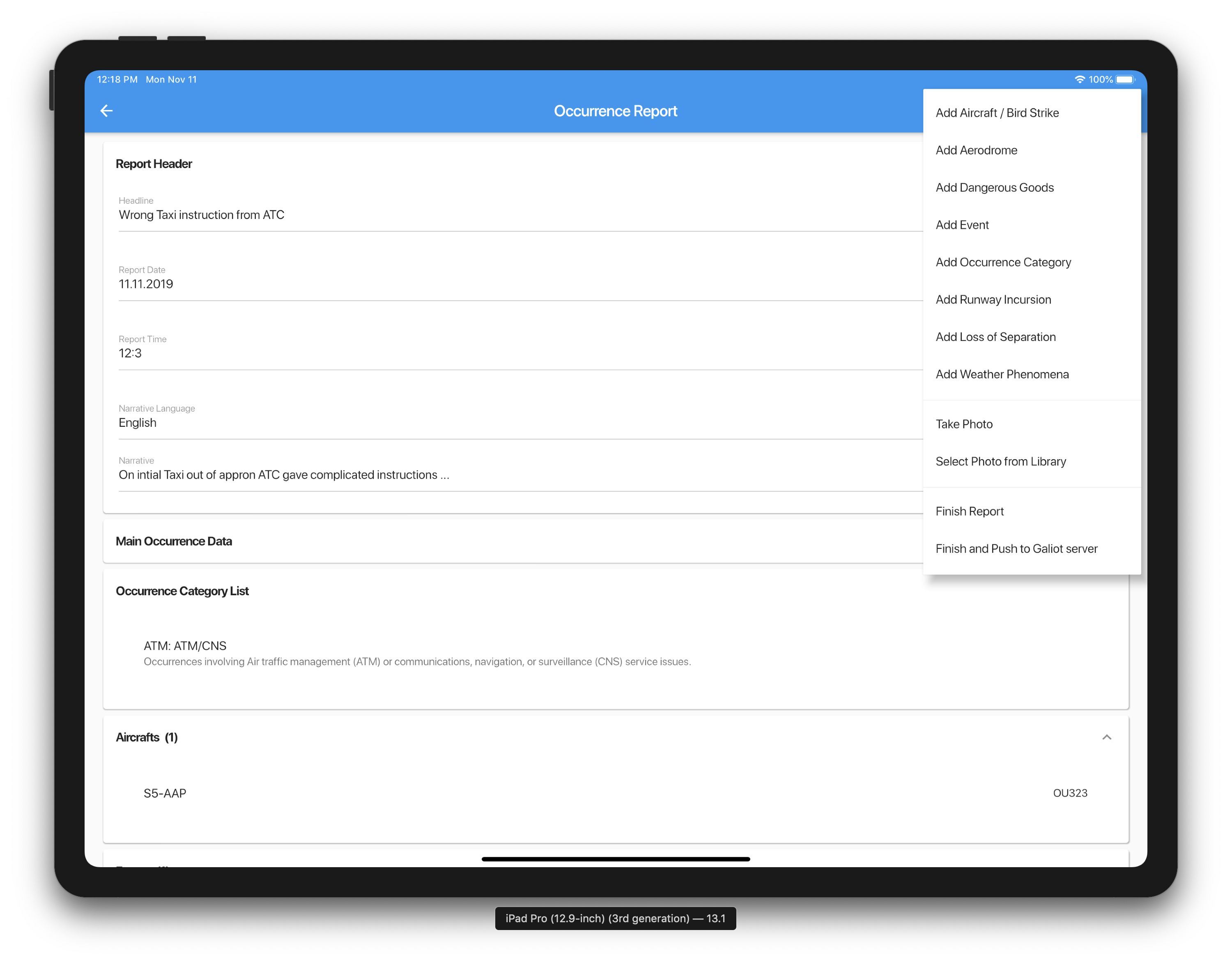Safety Reporting - Replace multiple legacy reports with a single ECCAIRS/ADREP based occurrence safety report
BACKGROUND AND REGULATORY REQUIREMENTS
Safety Risk Management (SRM) process is one of four components of Safety Management System (SMS), globaly required by ICAO (International Civil Aviation Organisation) Annex 19 and well described in ICAO Doc 9859. Safety reporting system is one of the main sources for identifying hazards for Safety Risk Management (SRM).
In European Union (EU) reporting, analysis and follow-up of occurrences is defined by Regulation (EU) No 376/2014. Mandatory reporting is defined in Article 4, Voluntary reporting in Article 5 and Mandatory data fields are listed in Annex I. Article 8 deals with European Central Repository where all occurrence reports collected in EU shall be finaly stored. Mandatory reportable occurrences are listed in Regulation (EU) No 2015/1018.
European Central Repository has been developed by EU Joint Research Centre (JRC) as ECCAIRS (European Co-ordination centre for Accident and Incident Reporting Systems), software platform established to assist states in collecting, sharing and analyzing their safety aviation information. As ECCAIRS was developed based on ICAO ADREP (ICAO Accident/Incident Data Reporting) taxonomy and Annex 13, ICAO in 2004 adopted ECCAIRS to collect Accident and Serious Incident data.
BENEFITS OF SINGLE, ECCAIRS/ADREP COMPLIANT SAFETY REPORT
In paper form era the main dilemma was one complex »all inclusive« reporting form or many different specialised simple reporting forms. With every additional type of occurrence (e.g. bird strike, dangerous goods, fatigue, … ) to be reported, complex single forms became longer or another specialised simple form has been issued.
Nowadays such complexity can be effectively addressed using smart mobile application with bi-directional synchronisation for online and offline occurrence recording at locations without internet connection.
Europe Regulation (EU) No 376/2014 defines the final customer (EU and also ICAO) safety reporting needs. Therefore ECCAIRS reporting is developed around single report form primarily focused on reporter's narrative and mandatory set of data identified in (EU) No. 376 Annex I. For each occurrence category, a smart subset of predefined optional data is available in a structured and modular way. Such modular concept solves very frustrating filling of non-applicable mandatory fields in great extent.
Taking into account reporter's (the first customer) user satisfaction and ECCAIRS (the last customer) statistical standardisation needs, instead of manual entering text fields, data for many occurrence attributes are filled very simple just by selecting one of predefined values. Even more, pre-connected group of linked data (e.g. aircraft make/model/series, operator, state of registry, serial number, category, propulsion type, mass group, ...) are filled out by only one selection (e.g. the aircraft registration).
Final benefit of ECCAIRS compliant internal safety reporting system is that exchange of occurrence safety data with National Aviation Authority (NAA) can be performed automatically by generated XML file based on E5X format file directly from internal safety report and related internal investigation.
TIPS AND TRAPS
Make life easier for your reporters. Do not force him thing which of your many legacy reports is appropriate for current occurrence. Use one reporting form, focused on reporter's narrative, mandatory data and optionally applicable data in a modular, structured and ECCAIRS compliant way. Basically, keep it simple and smart.
Also, do not put your reporters into position to decide by themselves if certain occurrence is mandatory reportable or not. Rather leave this decision to your Safety Service Office (SSO). They will use mandatory reportable occurrences listed in Regulation (EU) No 2015/1018 as guideline.
However, don't forget that reporter has the right to send to NAA report about whatever. To implement this enable reporter to clearly indicate (e.g. simple tick box in the report form header) if he/she wants his/her safety report to be sent by SSO to NAA in any case (meaning, also if not mandatory reportable).
Promote »report whatever you consider hazardous« reporting policy and motivate your staff (both Flight Crew and Cabin Crew) to take an active part in Safety Management System.
If a question »Shall or should I report this?« appears in your head, answer should always be »Yes!« Even seemingly insignificant occurrence and identified hazard have their places in the "Error Iceberg" and Dr.Reason's (»Swiss cheese«) models.
We were (only) lucky, when nothing happened and no occurrence to be reported. But this is exactly the right time to report the (well) identified hazard.
Andrej Petelin
Aviation Safety and Compliance ConsultantNovember, 2019
